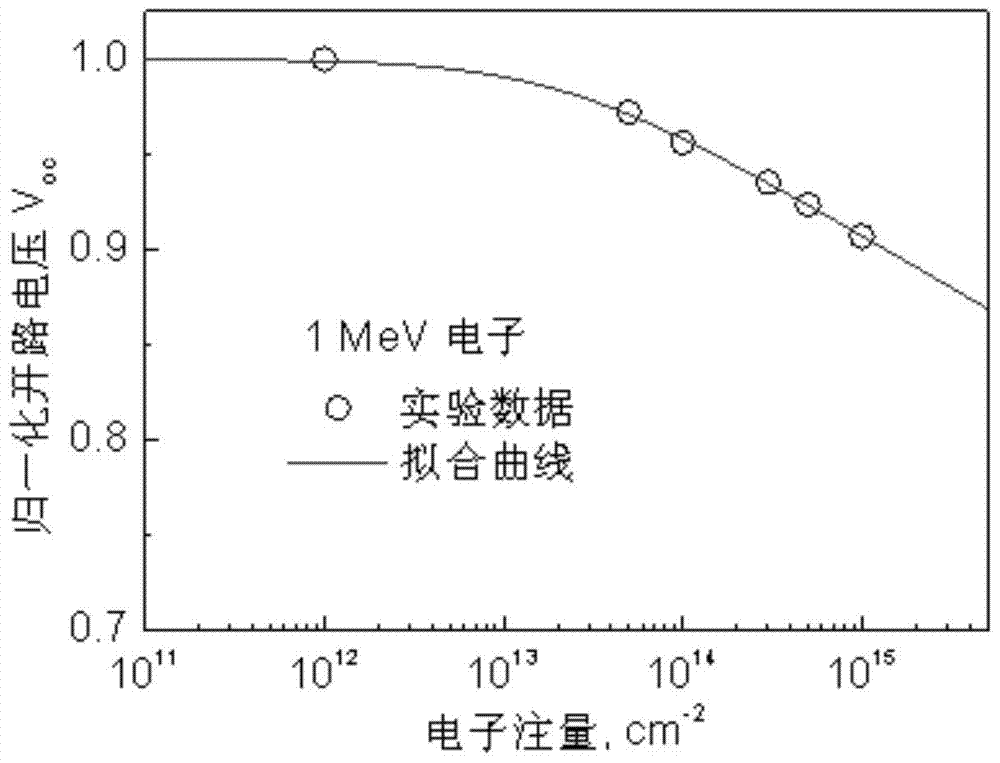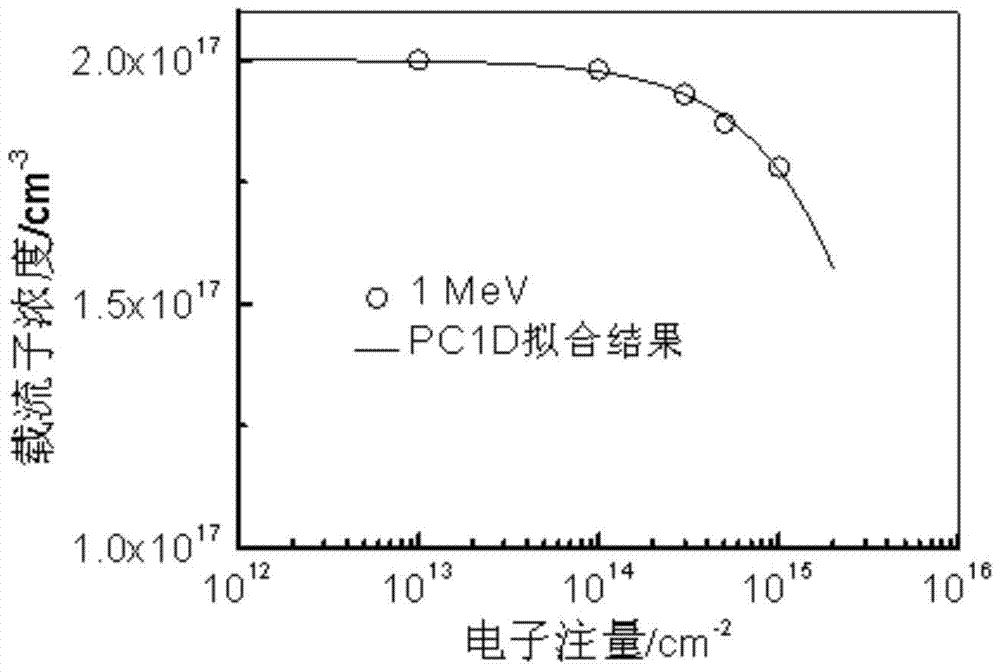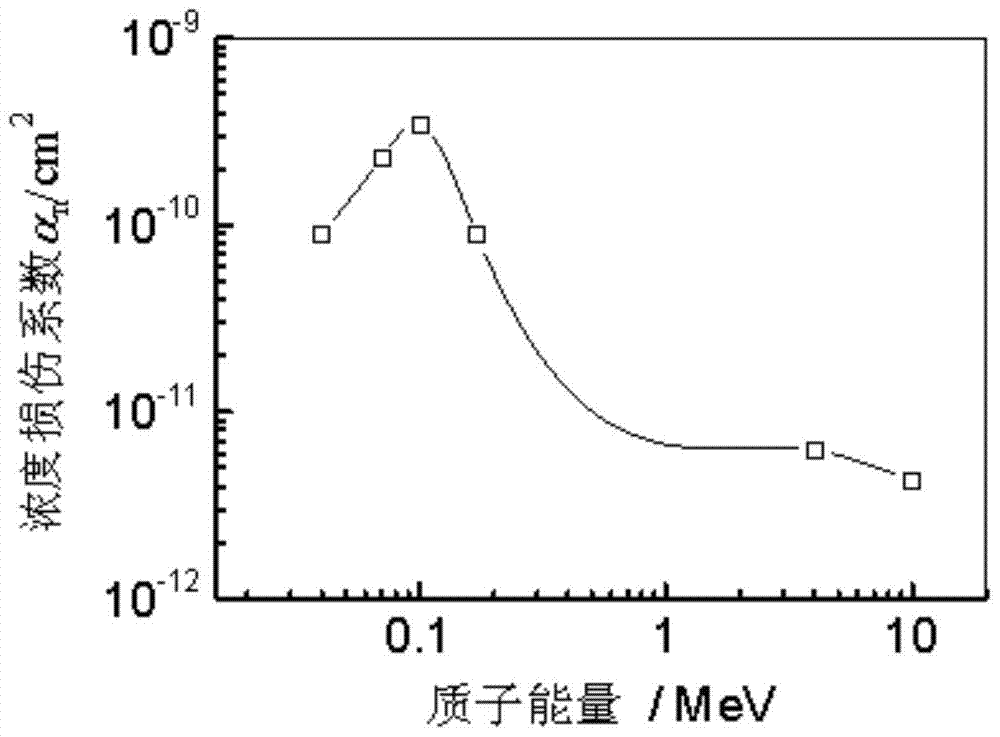A Method for Analyzing Majority Carrier Transport in Spatial Single Junction Solar Cells
A majority carrier and solar cell technology, which is applied in the field of analyzing the majority carrier transport of space single-junction solar cells, and can solve the problem that the change rule of the battery carrier transport properties cannot be given.
- Summary
- Abstract
- Description
- Claims
- Application Information
AI Technical Summary
Problems solved by technology
Method used
Image
Examples
specific Embodiment approach 1
[0017] Embodiment 1: A method for analyzing the majority carrier transport of a spatial single-junction solar cell in this embodiment is specifically prepared according to the following steps:
[0018] Step 1. Establish a solar cell open circuit voltage degradation model based on the carrier transport model of the semiconductor material under the irradiation of space charged particles and the solar cell energy band model;
[0019] Step 2. Establish the basic experimental law of solar cell open-circuit voltage degradation; obtain the law of solar cell open-circuit voltage degradation under charged particle irradiation through the ground equivalent simulation test in space radiation environment; among them, the law of solar cell open-circuit voltage degradation under charged particle irradiation Including solar cell open circuit voltage degradation law under different energy electron irradiation and solar cell open circuit voltage degradation law under different energy proton irr...
specific Embodiment approach 2
[0025] Embodiment 2: The difference between this embodiment and Embodiment 1 is that in step 1, the solar cell open circuit voltage degradation model is established based on the carrier transport model of the semiconductor material under the irradiation of space charged particles and the solar cell energy band model. The process is:
[0026] Based on the carrier transport model of semiconductor materials under the irradiation of space charged particles and the energy band model of solar cells, the open circuit voltage degradation model of solar cells is established:
[0027]
[0028] Before the charged particle irradiation, when the charged particle irradiation fluence Φ=0, the built-in voltage is Then the normalized open circuit voltage degradation model
[0029]
[0030] Equation (2) is consistent with the engineering application model of solar cells in form, where V oc0 Indicates the open circuit voltage of the solar cell before the irradiation of space charged par...
specific Embodiment approach 3
[0031] Embodiment 3: The difference between this embodiment and Embodiment 1 or 2 is that in Step 2, the open-circuit voltage degradation law of the solar cell under electron irradiation with different energies is as follows:
[0032] (1) Due to the damage effect of space solar cells under electron irradiation, there is an energy threshold for atomic displacement, so the electron energy of electron irradiation is greater than 200keV, and the incident electron energy of electron irradiation requires selecting 4 to 6 energy values;
[0033] (2) According to the parameters of common experimental equipment, select electron energies of 1, 2, 4 and 10 MeV for reference; the selection of electron fluence should be based on the degradation range of battery electrical parameters, and the degradation range of the maximum power of the battery is required to reach the radiation level. Below 75% of the previous irradiation, the selected electron fluence value is more than 4. Other steps an...
PUM
 Login to View More
Login to View More Abstract
Description
Claims
Application Information
 Login to View More
Login to View More - R&D
- Intellectual Property
- Life Sciences
- Materials
- Tech Scout
- Unparalleled Data Quality
- Higher Quality Content
- 60% Fewer Hallucinations
Browse by: Latest US Patents, China's latest patents, Technical Efficacy Thesaurus, Application Domain, Technology Topic, Popular Technical Reports.
© 2025 PatSnap. All rights reserved.Legal|Privacy policy|Modern Slavery Act Transparency Statement|Sitemap|About US| Contact US: help@patsnap.com



